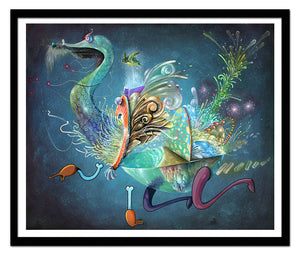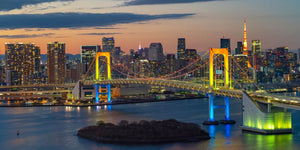
Seashores by NoseGo
Limited edition of 50 (signed & numbered)
Fine-art Giclée print on cold-press Italian watercolor paper
24" x 20"
Printed by Paragon Press
Artist Statement
About The Artist
NoseGo is a Philadelphia-based artist with a passion for illustration and media arts. He mixes fine art with a contemporary style to deliver highly energetic work. His designs feature an assemblage of patterns, vibrant colors and characters derived from his imagination and his surrounding environment.
Habitat of the Month:
Seashores

Photograph by Brocken Inaglory
The intertidal zone, also known as the seashore, is the area where land and sea meet. This zone is covered with water at high tide, and exposed to air at low tide. The land in this zone can be rocky, sandy or covered in mudflats. Within the intertidal zone, there are several zones starting near dry land with the splash zone, an area that is usually dry, and moving down to the littoral zone, which is usually underwater. You will find tide pools, puddles left in the rocks as water recedes when the tide goes out.
The intertidal zone is home to a wide variety of organisms such as sea anemones, sea stars, various types of crabs, barnacles and mollusks. Organisms in this zone have many adaptations that allow them to survive in this challenging, ever-changing environment.
Plastics, pollution, coastal development and warming temperatures are some of the many challenges threatening this unique and diverse habitat.
You can help save seashore habitats
- Donate to organizations working to raise awareness and research such as PangeaSeed, Sustainable Coastlines and Surfrider Foundation.
- Advocate stronger global and regional action to protect seashores and other threatened coastal habitats.
- Support the establishment and protection of marine protected areas (MPAs).
- Visit protected areas, and take a guided tour to learn more about these habitats.
- Think twice before you buy. Do not support the trade of endangered ocean animal products and try to reduce your carbon footprint.
- Educate yourself, friend and family on the issues facing seashores and other threatened coastal habitats. Act NOW if we wish to save our seas.
The Story Behind
Seashores
Nosego

About the Artist
Noségo





